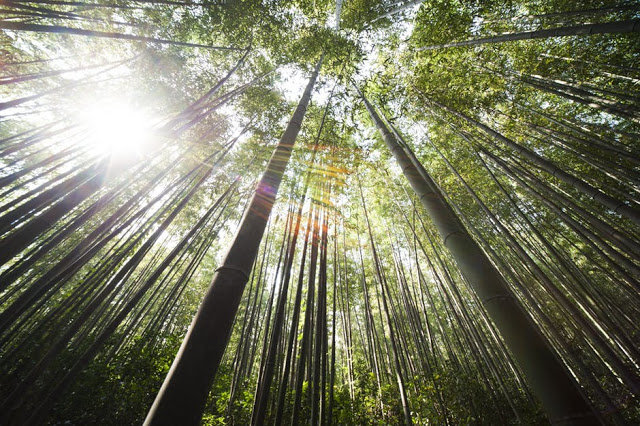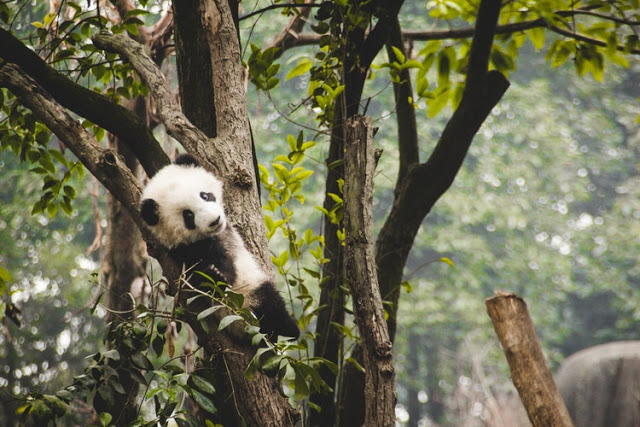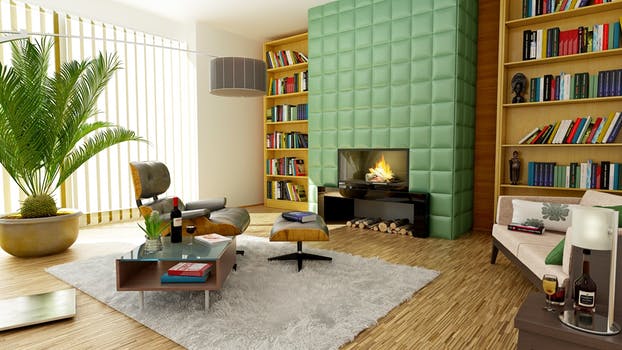Hello darlings!
As more and more people start to embrace a greener lifestyle, through their eating habits, transportation methods, and even their choice of clothing, it’s only natural that purchases for their home would follow suit.
That’s where bamboo flooring comes in. It’s a beautiful and eco-friendly alternative to hardwood floors.
However, there have been recent reports that say that bamboo products are wrongfully advertized as “green” and that we are being subjected to “greenwashing”. Most of the reports I was able to find were targeted to bamboo fabric and did not extent to bamboo floors but since I love to dig in such matters especially when it comes to ecolife, I thought I’d do some research and see what’s what!
How is bamboo better for the planet?
Bamboo is a fantastic plant that helps to improve the world around it; from its high carbon intake and its ability to regenerate damaged or degraded soil, to its ability to stabilize the surrounding lands.
1. Bamboo can regenerate degraded lands
In places where the soil been hurt badly by substandard agricultural practices, i.e. overgrazing, the land may lose its fertility and be unable to yield crops for years to come. This is not only bad news for the soil, but also for the farmers who grow the crop, the people and/or animals that may eat the crop, and food production in that country as a whole.
The good news is that bamboo can grow in damaged or infertile land, which provides a short-term benefit for the farmers who can sell bamboo to make money, and bamboo can revitalize the soil that it is planted in, which is a huge long-term benefit.
How does bamboo do this? Well, the bamboo plant has nutrient-rich leaves, which will naturally drop off during growth and decompose on the ground beneath. As the leaves break down, these nutrients are transferred into the soil, improving the quality of the topsoil and creating fertile agricultural lands that are capable of growing healthy plants in the near future.
Bonus: Bamboo even removes toxins, like mercury and lead, from contaminated earth, in a process known as phytoremediation. Once the bamboo is harvested, the toxins remain inside its tissues where they cannot harm humans.
2. Bamboo plants take in a lot of carbon dioxide
In school, you probably learnt that plants serve an incredibly important function in keeping our planet healthy: removing carbon dioxide (CO2) from the atmosphere. Plants use CO2 to create food for themselves in a process known as photosynthesis and emit oxygen as a byproduct.
That’s amazing in itself, but did you know that bamboo takes in four times more CO2 and produces more oxygen than hardwood trees do over the same period?
3. Bamboo plants stabilize the surrounding earth
Bamboo plants are a type of grass, which means that don’t need to be pulled out of the earth in order to harvest them. Instead, the harvester can leave the stalk firmly rooted in the ground, ready to re-grow, just like the grass in your garden.
This is great for the planet because it means that bamboo plants don’t contribute to soil erosion, whereby the soil is destabilized and easily moved by wind or water, something which can affect soil fertility. Other nasty side effects of soil erosion that bamboo plants are protecting us from include:
· Decreased water quality
· Mudslides
Bonus: It also reduces the labor costs needed to replenish the plants, thereby making the material cheaper.
4. Bamboo is grown without pesticides
Bamboo plants don’t need pesticides to help them grow, which is great news for the planet because it won’t harm insects (who are super important to the food chain) or animals and it means that the soil and air won’t be polluted by pesticides.
5. Cutting bamboo for flooring does not hurt panda bears
If there are three things that everyone knows about pandas, it’s:
- They’re endangered
- They have major trouble mating
- They only eat bamboo
So, whenever you buy a bamboo product, you might wonder about whether this bamboo should have been used to feed a panda bear instead. Well, thankfully you don’t have to worry about that.
It turns out that pandas, although they love bamboo, don’t like the only type that is made into flooring (moso bamboo). No one knows for sure why pandas don’t eat moso, but if you could ask them – and you can’t think of a better question to ask a talking panda! – they’d probably tell you that it doesn’t taste very nice or that it’s too much effort to reach because pandas live up in the highlands and moso grows in the lower regions.
What’s the downside?
As bamboo is becoming more and more popular, its cultures increase in size. You’d think that with all the good properties mentioned above, that would be a good thing. Well, it is but one has to consider biodiversity too.
It takes careful planning and culturing to keep the balance and one has to wonder if this planning actually takes place or if everything is sacrificed for gain. For example, bamboo can easily be cultured in otherwise un-exploitable areas like inclined fields, and if harvested right it can benefit the ecology of the surrounding system by letting the sunrays reach lower plants. If these things are taken into consideration then the downside is off course less.
What about bamboo floors?
One of the major ecological benefits of bamboo has to do with its cleaning. That’s right, cleaning a bamboo floor is much more earth kind than it is for other types of flooring. All you’ll need is a broom and the occasional damp sponge, so you can (ecologically) get rid of those chemical-based cleaning products.
Another big eco-friendly benefit is that bamboo is completely biodegradable, so if you ever do need to replace it (unlikely!), it’s not going to hang around the landfill for hundreds of years.
For more information about the eco-friendliness of bamboo as a flooring, check out the video below from sustainable designer Nick Oosterveen, who built his entire house out of bamboo. It's beautiful.
The only red flag I was able to find online about these floors is the use of formaldehyde. As you know from my previous posts, formaldehyde is a known human carcinogen and its use for furniture is widespread. Fortunately, there are companies out there with high end bamboo floors that are formaldehyde free and those are the ones I’d choose to patronize.
How does bamboo compare with hardwoods for eco-friendliness?
If you’re considering installing bamboo floors in your house, it’s a reasonable guess that you’re also looking at hardwoods and you want to know how they stack up against each other in terms of green credentials. Well, let’s take a look at the comparisons.
1. Shipped from China vs Shipped to China and Back
You already know that bamboo is grown and manufactured in China, which means that it has to be shipped to the US or Europe in order to form part of your flooring. There’s no denying that this means miles of transportation and a big ol’ addition to your carbon footprint.
What you probably didn’t know is that a majority of hardwoods that are grown in the US are actually shipped all the way to China for processing, milling, and finishing, before being returned to America. That’s double the transport mileage double the fossil fuels burnt, and double the number of carbon offsets to buy.
2. Harvesting by Hand vs Harvesting with Machines
When you cut a hardwood tree, you have to use heavy, specialized machinery, which is damaging the earth by using fossil fuels to run, emitting CO2, and removing the very thing that can reverse that CO2 damage.
But what is the alternative? Redwoods can grow to 24 feet in diameter and nearly 115 stone in weight - you can’t cut that down with a hacksaw.
Well, bamboo is a much smaller plant by comparison, which means that it can be cut down carefully by hand. Plus, the bamboo harvesters are likely to notice if an animal or bird has mistakenly made its way into the crop and will be able to disperse of these creatures without harming them – something nearly impossible to do from inside the cab of an industrial feller.
Not only is harvesting bamboo by hand better for the environment, it’s also better for the people because it creates more jobs. An estimated six million people in China work in the bamboo industry.
3. 5-7 Years vs 50-100 years
If you’ve even taken a trip to a national park or paid attention to your science teacher, you’ll know that trees can continue growing for centuries or even millennia without interference from humans, so it’s almost a crime to cut them down when they’re mere babies.
Trees take decades to even become mature enough to be cut down and used to create products, whereas moso bamboo (the specific type that is used to make bamboo flooring) takes between five and seven years to reach full maturity. Any bamboo harvested after the seven-year point will be far too brittle to be turned into flooring (or other products), so it’s not like you can leave it to grow beyond that.
Plus, this harvesting actually helps to boost the ecology of the area as mentioned above because cutting the bamboo stalks allows the sunlight to reach down and nurture plants that are shorter.
This quicker lifespan and more regular harvest means that bamboo actually produces much more timber than hardwood trees do over the same period – a gasp-inducing twenty times as much. It’s also an example of sustainable growth.
The producers of bamboo ensure that they only cut bamboo at the right age by using color-coded ribbons wrapped around the plant; a method that is not only adorable, but is also kinder to the environment than planting them all together and cutting down a massive section at once.
Also, it’s important to note that there is no loss in quality for bamboo that regenerates after the previous lot is harvested. In a way, it’s like trimming your hair. You need to cut it before the split ends appear, but the new hair that grows won’t have degraded because of the cut… unless your stylist does something really odd.
4. Cutting Grass vs Uprooting Trees
You know when you uproot a plant in your garden and all of the surrounding soil falls into the hole you just made? Well imagine that happening on a scale about a thousand times bigger. That’s what happens when you unearth a tree from its position in order to turn it into wood for flooring.
That tree, which has been there for at least 50 years, is entrenched in the soil and whole communities of insects, animals, and birds have built their homes in and around that tree. That’s a major disruption to the land and the wildlife, which could cause soil erosion and lots of other nasty things, i.e. mudslides.
Bamboo on the other hand does not have this problem, allowing the roots to remain in place and preventing this sort of disruption.
Additionally, while the bamboo plant can begin growing again immediately, the tree will need to be re-grown from a seed (and take another few decades). On the plus side, however, you’ll probably be able to see the Cubs win the World Series again when it comes time to harvest that tree.
5. Using a Newer Industry vs Increasing Pressure on the Overstretched Timber Industry
While hardwoods have been used in flooring in North America for some time now, bamboo is a fairly young competitor, having only really entered the market in the 90s. The biggest difference between the two is that the hardwood industry is already overburdened and facing pressure from all of us who want to ensure that there are still forests and national parks around for our grandchildren to enjoy.
On the other hand, bamboo doesn’t have the same eco problems (because it’s renewable) which mean that the industry is still thriving and not causing irreversible environmental damage.
How to make your bamboo floors the greenest of them all
If you’re choosing bamboo flooring for its environmental benefits, then you want to make sure that your choice is the most eco-friendly available. Here are some tips to further reduce your eco-impact.
- Ensure that your manufacturer only uses bamboo harvested during the 5-7 year timeframe: Plants younger than five years old are too weak and plants older than seven are too brittle to be used in flooring. This means that they’ll either break during the manufacturing process - and thereby waste a natural resource - or that they will need replacing after just a few years – which wastes material and your hard-earned cash.
- Buy strand woven or solid bamboo floors: Engineered bamboo floors, which are made from a combination of plywood and bamboo, have the same lifespan as other types of bamboo flooring, but the difference is that strand woven and solid bamboo floors can be sanded down and re-varnished if they start to look a bit worse for wear. Engineered bamboo can’t be, which means having to get a whole new floor - much worse for the environment than a simple revamping.
- Buy bamboo floors without formaldehyde: That’s actually what you should do for every piece of furniture that get’s a place in your home. Indoor plants can do so much cleaning the air after all. It’s your job to do the research and find the best choice. I wouldn’t want my daughter playing around on a floor that emits VOC’s would you?
- Check industry certifications: There are many certificates available for those in the flooring industry who can prove that their products meet high environmental standards, i.e. lower emissions and improved indoor air quality. The best bamboo flooring companies will even showcase these proudly on their websites. Some of the best certificates to look for include:
- The Forest Stewardship Council (FSC) Pure Certificate, which ensures that high environmental criteria are met during the harvesting of bamboo, including, among other things, that the harvest is preserving the natural biodiversity of the surrounding environment. This certificate is only handed out if every company in the production chain meets these strict standards.
- The Leadership in Energy and Environmental Design (LEED) credits 6 and 7, for using material (i.e. bamboo) that is rapidly renewable and responsibly sourced.
- The International Organization for Standardization (ISO) 14001 environmental management standards, which means that the company has looked at its environmental impact and put in place a system to reduce the overall impact over time.
Have you heard all the fuss about bamboo and “greenwashing”? How has this affected your choices?
Lots of love








